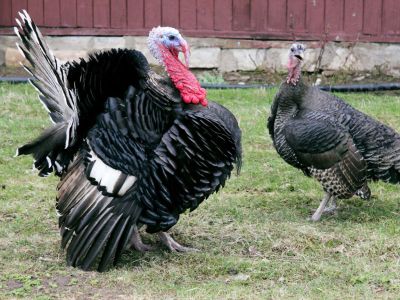Whatever the reason you’ve decided to raise turkeys, there are a few things you’ll want to learn to keep them healthy and growing.
How to Raise Turkeys at Home
Raising turkeys is somewhat like raising chickens. Both need a brooder space when they are young, but size and diets of the two are different. Turkeys need a high-protein turkey starter food for the first six weeks. It is not acceptable to substitute chicken starter food. Nutrient needs of the two are quite different because controlling the protozoa that causes coccidiosis is different in each bird. Purchase them from a certified breeder. Those sold at feed stores may be from a certified nursery or maybe not. Make sure to ask so you’ll start off with a healthy turkey poult. If you’re growing the bird for a holiday feast, check the time needed for maturity. Most breeds need 14-22 weeks to grow into a mature and edible stage.
Food, Water, and Space for Keeping Turkeys
If this is your first experience in keeping turkeys, make sure the birds eat within the first 12 hours of arrival at their new home. Sources suggest they learn to drink water before you feed them. Provide clean water to them at all times. Most poults (babies) will only be a day old, possibly two when you get them home. Put down wood shavings in their space, but not sawdust or newspaper. They may eat the sawdust instead of starter food and starve themselves to death. Newspaper on the floor can create splayed legs from slipping and sliding around. Provide an indoor (nesting spot) location of 6 square feet for the turkeys in addition to 20 square feet or more outdoors. Provide a roosting area if possible. Keep them inside at night to provide more control over parasites and keep them safe from predators. Turkeys are social birds, so plan to spend time with them while you’re outside. Allow one square foot of space for the young birds, up until they’re two months of age. Keep them in a brooder to stay warm, dry, and contained until they’re six weeks. Keep the brooder area draft-free. Young poults cannot regulate their body temperature for the first ten days. Use brooder guards, especially during the first week to keep the birds in place. After that, provide the space mentioned above. You can gradually increase the space if needed. Sources also say it’s best to raise turkeys in groups of three to six. Turkeys in your backyard are a fun experience after they get through the most difficult few weeks.
